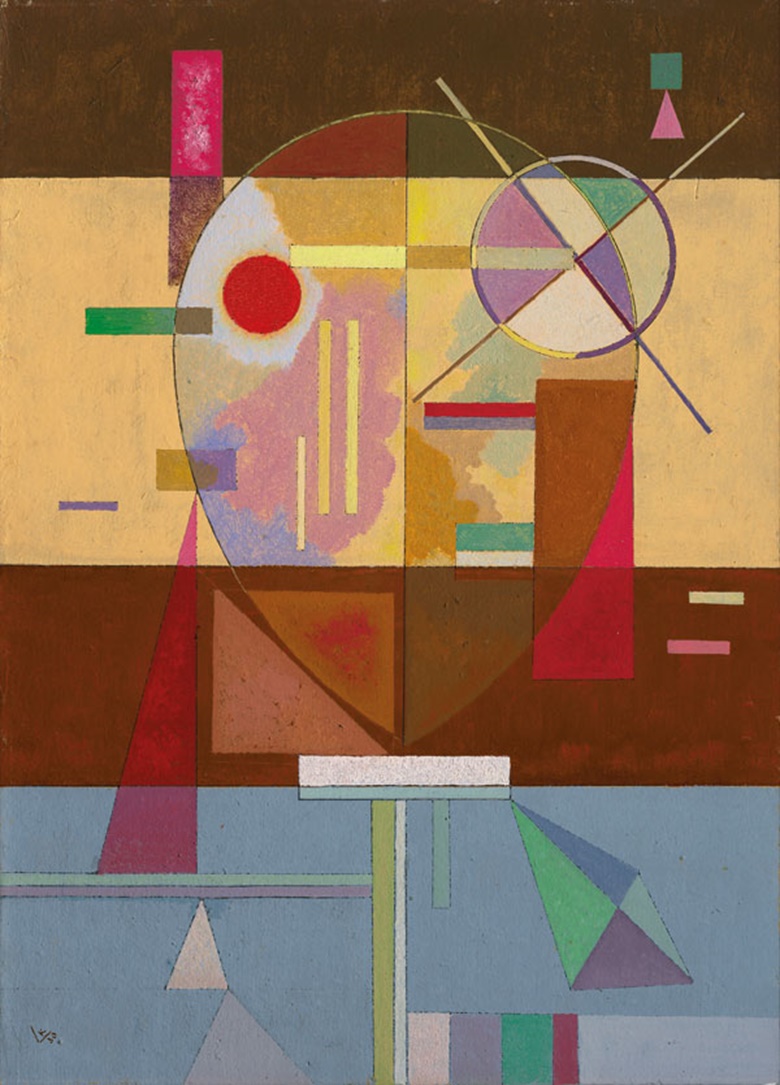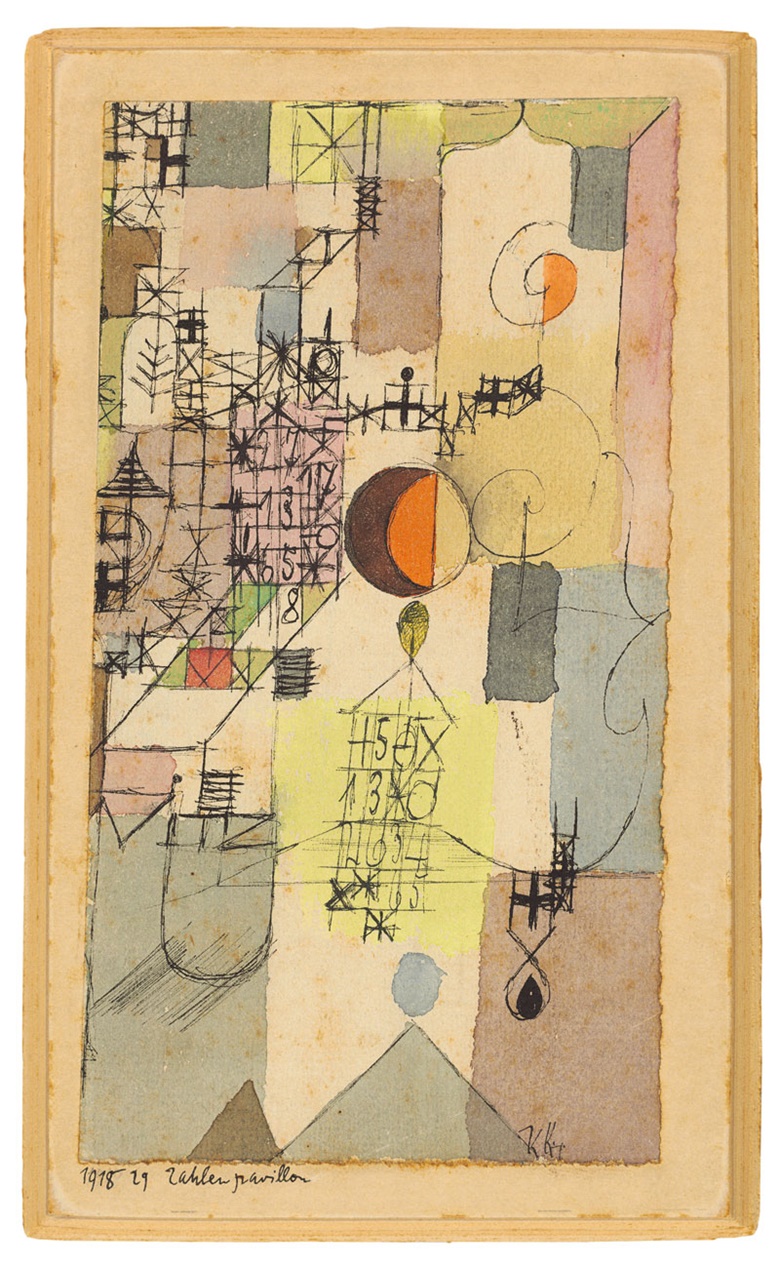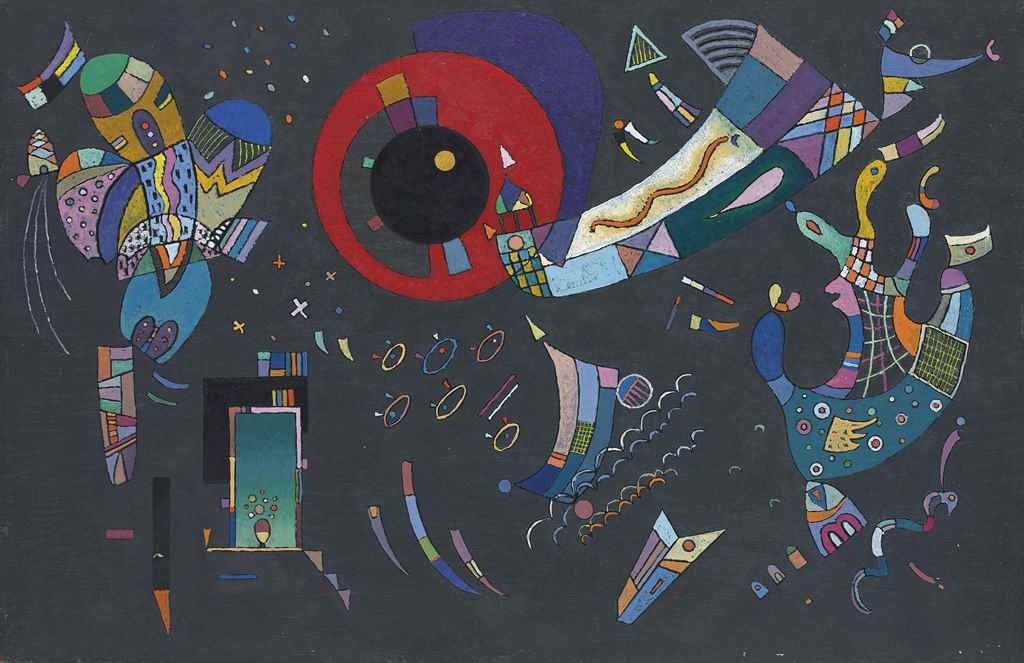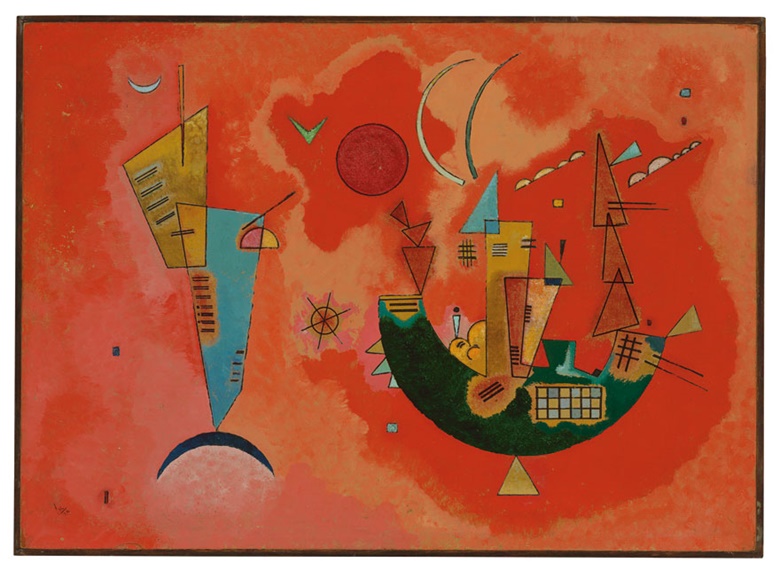https://www.christies.com/features/Klee-and-Kandinsky-7441-3.aspx
有英文影片
Klee and Kandinsky at the Bauhaus
Specialist Jay Vincze looks at the highly influential period of the artists’ lives when they were neighbours, friends and colleagues at the Bauhaus — with a collection of works offered in our Impressionist & Modern Art Evening Sale on 22 June
For over 30 years Wassily Kandinsky and Paul Klee enjoyed one of the most fruitful and lasting friendships in modern art, working, exhibiting and living alongside one another during some of the most groundbreaking years of their careers.
The pair embarked on their artistic education in Munich in the early years of the 20th century, studying at the city’s academy of fine arts under the tutelage of the painter Franz von Stuck. But it was not until a decade later, in October 1911, that they would become acquainted. By this stage, the two were neighbours, living on the same street in the artists’ quarter of Schwabing.
Kandinsky recorded his first impressions of the young Klee in a letter to his close friend Franz Marc, explaining that ‘there is certainly something there in his soul’. Klee, meanwhile, noted in his diary: ‘Personal acquaintance [with Kandinsky] has given me a somewhat deeper confidence in him. He is somebody and has an exceptionally fine, clear mind.’ They discussed Kandinsky’s plans to establish a new society of artists and agreed to meet more often in the future.
At this time Kandinsky left the New Artists’ Association of Munich, of which he had been a founding member, to establish The Blue Rider group with his friend Franz Marc. In his role as special correspondent for the Swiss periodical Die Alpen, Klee glowingly reviewed The Blue Rider exhibition in December 1911, reserving special praise for Kandinsky. Klee soon joined the group for their second exhibition in 1912, subtitled Black and White, in which he was represented by 17 drawings.
Throughout the years immediately preceding the First World War, the older artist made introductions on Klee’s behalf, encouraging collectors such as Arthur Jerome Eddy to purchase the young artist’s work. But at the outbreak of war Kandinsky was forced to fee Germany as an enemy alien. Although the pair met briefly in Switzerland in the summer of 1914, they would not reconnect again for almost eight years. By this time, their professional fortunes had dramatically changed.
Klee was now a widely acclaimed painter, experiencing critical and commercial success across Europe. In 1921, he was invited by Walter Gropius to become a master at the Bauhaus in Weimar, which granted him a new degree of financial security and professional standing.
Kandinsky, on the other hand, had been absent from the German art scene for a number of years, working on the reorganisation of the cultural establishment in Russia following the Revolution. After encountering the ideological limitations of the Constructivists, who rejected his subjectivism and spiritualism, he returned to Germany where he was, once again, the subject of fierce controversy. From Berlin he sent a letter to Klee at the Bauhaus, expressing his desire to see his old friend.
Just a few months later, Klee would assist Kandinsky and his wife in their move to Weimar, where Kandinsky joined the faculty of the Bauhaus. They came to know each other as colleagues and revived their tradition of exchanging small paintings and works on paper on each other’s birthdays and at Christmas.
When the Bauhaus moved to Dessau in 1926, they became neighbours again, living side-by-side in two semi-detached masters’ houses on the new Bauhaus site. Here they fell into an easy routine, working and teaching, socialising together with their wives, and taking long walks in the valley of the Elbe river.
With the rise to power of the National Socialists in 1933, Germany became a dangerous place for both artists to live
As they entered the 1930s, an increasingly complex and dangerous political climate in Germany ushered in a period of intense uncertainty and upheaval. Klee resigned from his Bauhaus position in 1931 to begin a new post at the Art Academy in Dusseldorf, while the dissolution of the school in Dessau in 1932 saw Kandinsky move to Berlin. However, with the rise to power of the National Socialists in 1933, Germany became a dangerous place for both artists to live.
Klee was dismissed from his teaching post by the authorities, and both he and Kandinsky were labelled ‘degenerate’ artists by the new government, who confiscated their works from public collections. Both fed the country, Klee moving to his hometown of Bern in neutral Switzerland and Kandinsky to Paris. They remained in contact during this time via regular letters.
Klee and Kandinsky saw each other for the last time in February 1937, when Kandinsky and his wife Nina travelled to the Swiss capital for the opening of a retrospective of his work at the Kunsthalle Bern. While there, they made a point of visiting Klee, who was largely housebound due to the debilitating illness that had plagued him since 1935. Kandinsky brought with him the watercolour Above-Below, which he dedicated ‘To my dear friend of many years’.
The two would remain close until Klee’s death in 1940, and Kandinsky continued to remember his friend in his writings for the rest of his life.

幾本Wassily Wassilyevich Kandinsky (1866~1944)中文書
Vassily Kandinsky, Murnau am Staffelsee
20th century[edit]
On the initiative of Emanuel von Seidls, the site of Murnau changed completely at the start of the 20th century. In 1908 two pairs of artists (Gabriele Münter[3] and Vassily Kandinsky;[4] and Marianne von Werefkin[5] and Alexej Jawlensky[6] stayed in Murnau at the same time to paint together.[7] Through their pictures of Murnau and its scenery, which they continued to paint until 1914, the market town became famous to a worldwide art audience. In the history of art, this period before the First World War is called the "Murnau Era".
This period is directly connected to these four artists and marks stylistically the development from expressionism to abstract art. Today, the Münter-Haus ("Russian House"),[8] where Münter moved in 1909 with Kandinsky, is one of the most prominent cultural attractions of Murnau; as is also the Castle Museum with its art collection.[9]







沒有留言:
張貼留言